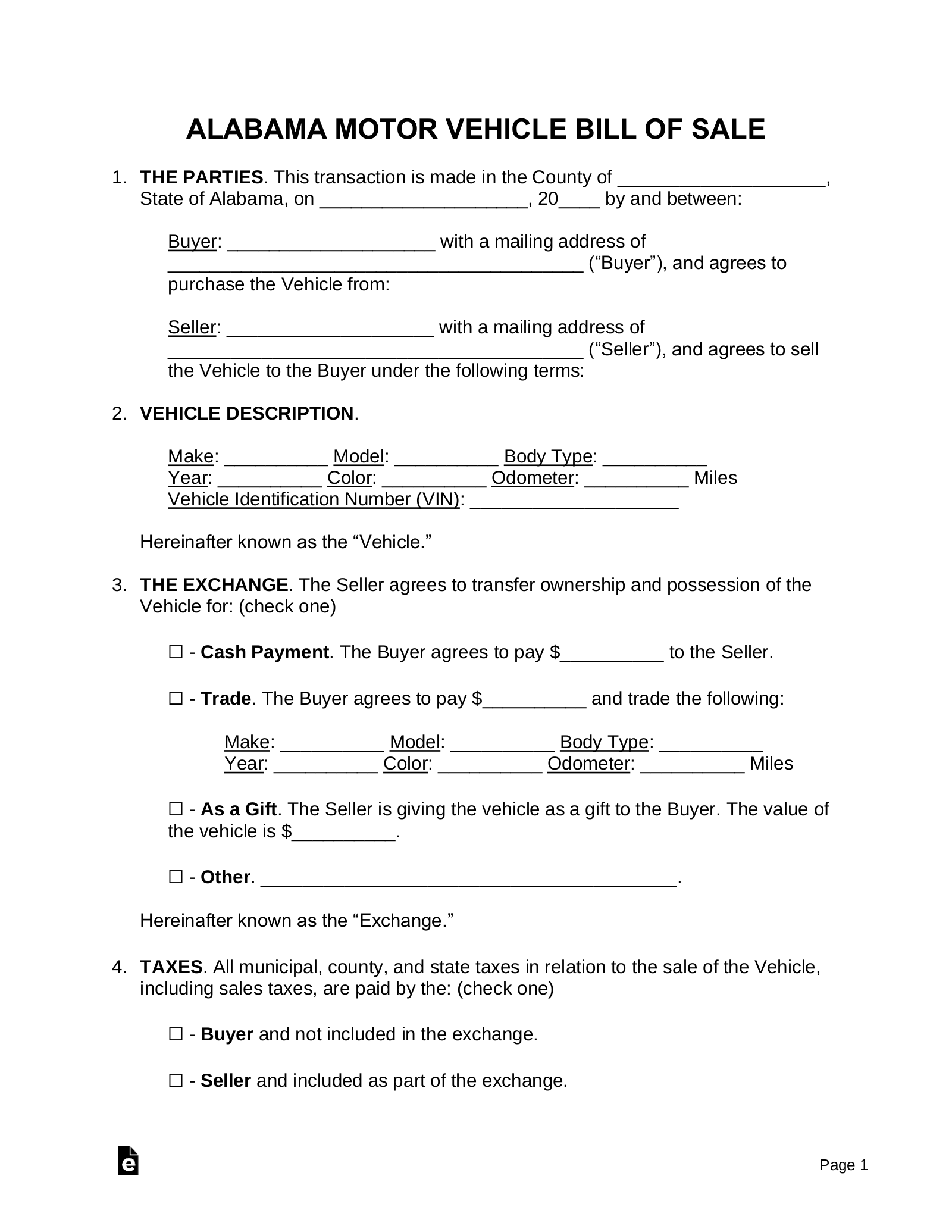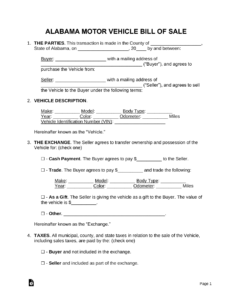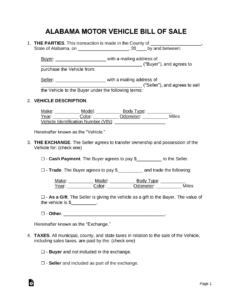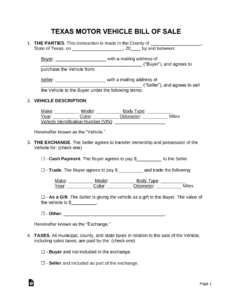Buying or selling a vehicle in Alabama involves more than just a handshake and an exchange of keys or cash. To ensure a smooth, legally sound transaction, one crucial document stands out: the bill of sale. This simple yet powerful paper serves as a record of the transfer of ownership, protecting both the buyer and the seller from potential disputes down the road. It’s a foundational piece of the puzzle for any private vehicle sale within the Yellowhammer State.
While the process might seem daunting at first glance, securing and properly filling out an Alabama vehicle bill of sale template can simplify everything. It provides a clear, structured format to document all the essential details of your transaction, making sure nothing is overlooked. This article will guide you through why this document is indispensable, what information it should contain, and how to effectively use a template to ensure your vehicle sale or purchase is compliant and hassle-free.
Why You Need an Alabama Vehicle Bill of Sale
A bill of sale isn’t just a formality; it’s a vital legal document that protects both parties involved in a vehicle transaction. For the seller, it provides irrefutable proof that the vehicle has been sold and ownership has been transferred, thereby releasing them from any future liability related to the vehicle, such as accidents or parking tickets. For the buyer, it serves as official documentation of purchase, which is essential for proving ownership and registering the vehicle in their name. Without it, you could face significant hurdles and potential legal issues.

In Alabama, while a bill of sale isn’t always explicitly mandated by state law for every private sale to transfer title, it is highly recommended and often required by local county probate offices or license plate issuing officials during the registration process. It acts as supplementary evidence to the vehicle’s title, confirming the details of the sale and the agreed-upon price. This helps ensure that the correct sales tax is assessed and that the vehicle’s ownership chain remains clear and verifiable.
Key Information to Include
A comprehensive Alabama vehicle bill of sale template will guide you to include all necessary data points. Accuracy is paramount here, as even small errors can lead to delays or complications. The document should clearly identify the buyer and seller, the specifics of the vehicle being sold, and the terms of the sale. Think of it as a detailed snapshot of the transaction at the moment of transfer.
Beyond the basic information, it’s also wise to include disclosures, such as the odometer reading, which is legally required in most states to prevent odometer fraud. Signatures of both parties are, of course, critical to authenticate the agreement. While notarization isn’t always a strict requirement for a bill of sale in Alabama, it can add an extra layer of legal validity and can be beneficial if there are any future disputes. Always check with your local probate office for specific county requirements.
- Full Legal Names and Addresses of Both Buyer and Seller
- Detailed Vehicle Description (Year, Make, Model)
- Vehicle Identification Number (VIN)
- Current Odometer Reading (Stated as Actual or Not Actual)
- Sale Price of the Vehicle
- Date of the Transaction
- Signatures of Both Buyer and Seller
- Any Agreed-Upon Terms or Conditions (e.g., “as-is” sale)
Where to Find and How to Use Your Alabama Vehicle Bill of Sale Template
Fortunately, finding a suitable alabama vehicle bill of sale template is easier than ever. Many state government websites, reputable legal document providers, and even automotive resource sites offer free, printable versions that conform to general Alabama requirements. It’s always a good idea to ensure the template you choose is comprehensive and clearly laid out, allowing for all the essential information to be easily entered. Once you have your template, you’re ready to start filling it out.
When completing the template, take your time and double-check every piece of information. Ensure that names are spelled correctly, addresses are accurate, and the Vehicle Identification Number (VIN) matches the one on the vehicle itself and its title. Any discrepancies could cause issues when the buyer attempts to register the vehicle. It’s also wise to complete the document in a clear, legible manner, whether you’re typing or handwriting the details.
Before any money changes hands or keys are exchanged, both the buyer and seller should review the completed bill of sale thoroughly. This ensures that both parties agree on all the terms and that the document accurately reflects the transaction. Once satisfied, both individuals should sign the document. It’s good practice for both the buyer and the seller to receive an original signed copy for their records. This provides each party with tangible proof of the transaction.
After the bill of sale is signed, the buyer will typically take the vehicle title (signed over by the seller) and the bill of sale to their local probate office or Department of Revenue office to complete the registration and titling process. The seller, on the other hand, should keep their copy of the bill of sale safe and may wish to notify their insurance company and the Alabama Department of Revenue that the vehicle has been sold to avoid any lingering liabilities. This simple step of using a template properly ensures a secure and compliant transfer of ownership.
Completing a vehicle transaction doesn’t have to be complicated, especially when you have the right tools at your disposal. A well-executed bill of sale provides peace of mind for both the person selling the vehicle and the person buying it, creating a clear and undisputed record of the transfer.
By taking the time to properly utilize an appropriate template, you are not only safeguarding yourself legally but also contributing to a transparent and trustworthy exchange. This critical step ensures a smooth transition of vehicle ownership in Alabama, allowing both parties to move forward without concerns.



